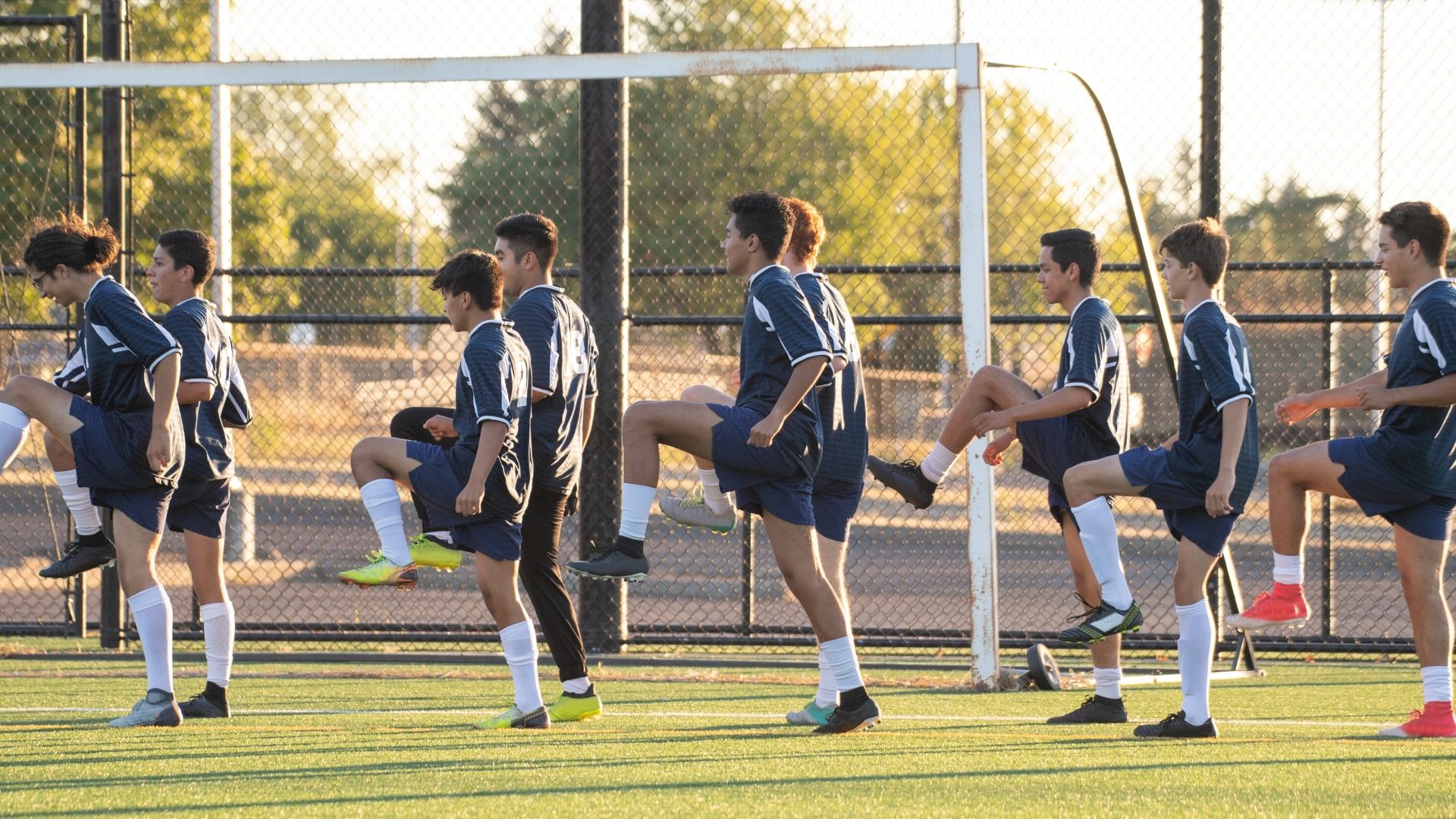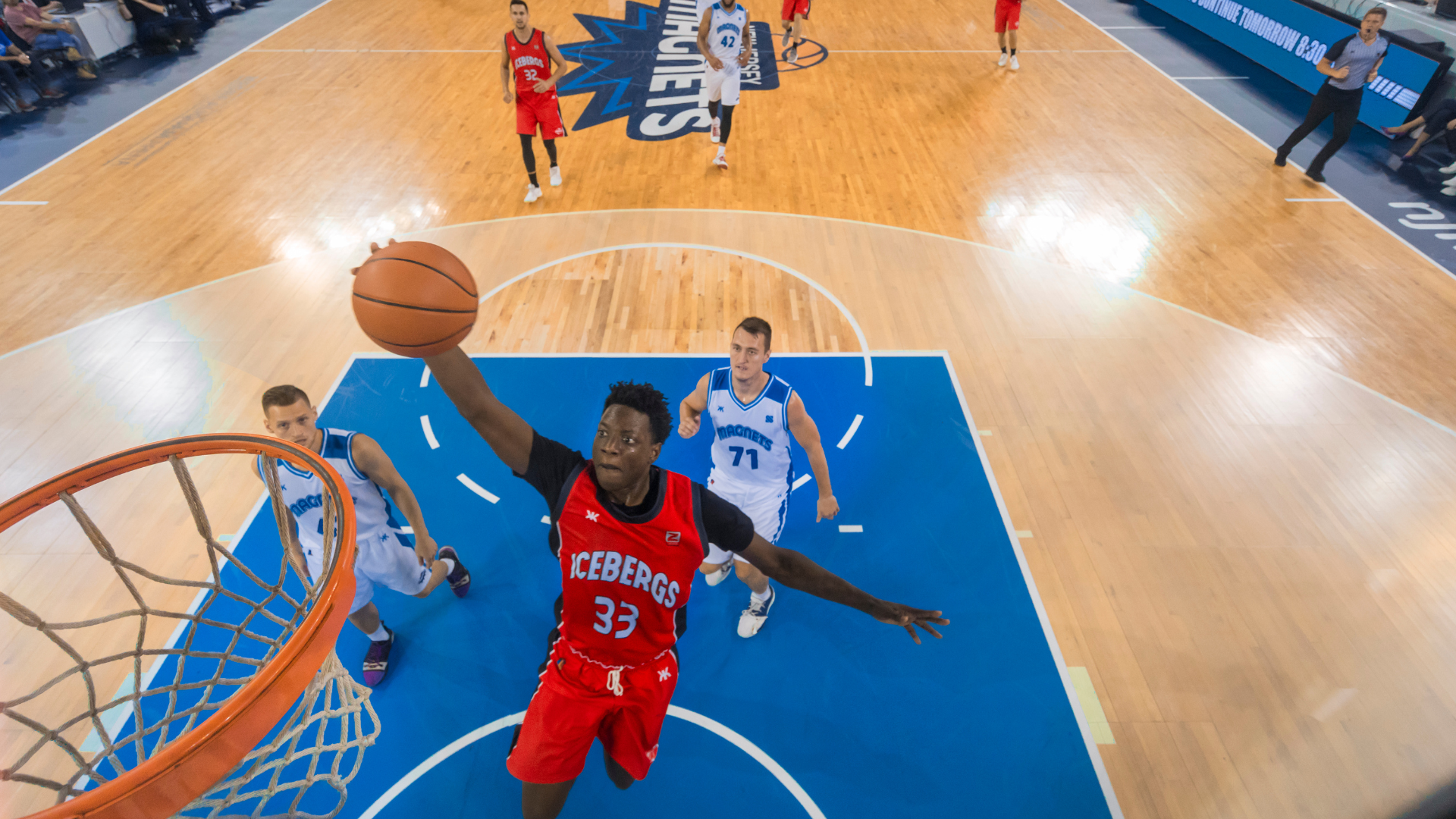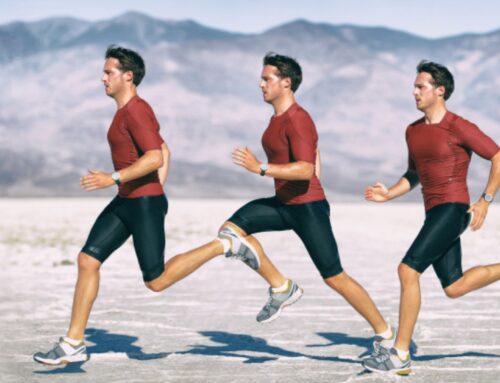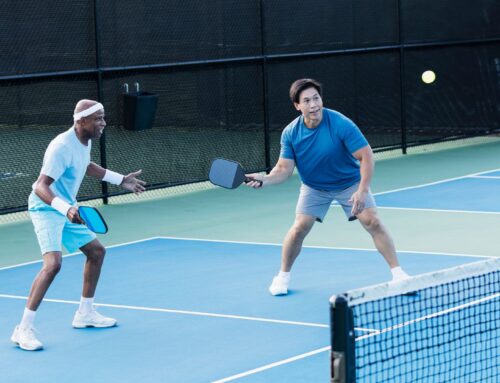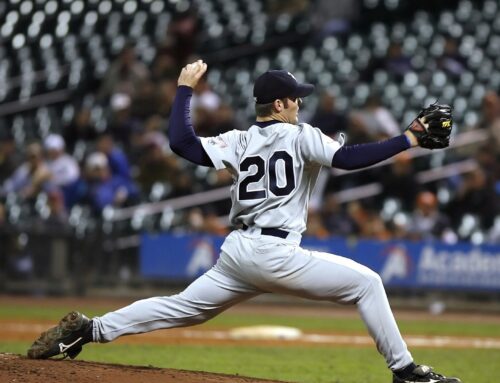A warm up is an important part of preparing your body for the activity that you are about to perform. When it comes to warm ups for a sport, there are exercises that can better prepare you for the specific activity and movements you are about to perform.
We will look at warm ups for sports, including long distance running, hockey, soccer and basketball. I will discuss how a slow and gradual start to activity can help to prevent injury and aid in rehabilitation.
Table of Contents:
- What is a warm up?
- Warm ups for running
- Warm ups for hockey
- Warm ups for soccer
- Warm ups for basketball
- Warming up for injury prevention
What is a Warm Up?
A warm up is any activity that helps prepare you for the activity that you are about to perform, like exercise, sport, or daily life. As the name suggests, warm up exercises are intended to warm up your body. Warming up the muscles helps prepare them for activity by increasing blood flow to the muscles and loosening joints. Ideally, you want to slowly ramp up your heart rate and your respiratory rate rather than being thrust into heavy activity and heavy exertion right away.
The warm up typically happens right before the activity is going to start and its purpose is to:
- reduce the risk of injury while performing the activity;
- enhance your performance of the activity;
- or minimize pain in cases of injury or chronic conditions.
You may also enjoy reading: Ankle Sprain Physiotherapy
Warm Ups for Running
Running long distance primarily involves the lower body muscles. The main muscle groups are the glutes, quads, hip flexors, the hamstrings and the calf muscles. The core muscles are also involved. With running, it is important to also warm up and loosen the joints of the lower body as they absorb significant forces with each running stride.
A dynamic warm up can include marching, heel kicks, walking lunges and opposite toe touches. Also, pay attention to your running posture and form when you begin your run to ensure proper technique throughout.
You may also enjoy reading: Does Ice Help with Inflammation
Warm Ups for Hockey
Playing hockey involves a variety of different movements that engage the entire body. You’re changing direction quickly. You’re handling a hockey stick and shooting a puck. There is a lot of body contact. You need balance, power, speed and agility. In addition, you are doing all of this on ice skates, which also needs to be addressed in warm ups.
In hockey, you primarily engage the lower body and the core. You are skating and you’re pushing off laterally. You could do lateral lunges to prepare your body for that movement. Because you have to stop suddenly and change directions, a shuttle run where you run back and forth from one line to another line stop quickly change direction would be appropriate. Again, you’re not doing this at full speed. You are doing a light intensity version of what you are preparing to do at game time.
To prepare for power movements, you can do some light hopping on the spot to activate calves and your ankles. Anything that closely mimics what you are about to do at a lighter intensity.
You may also enjoy reading: Common Shoulder Injuries
Warm Ups for Soccer
Playing soccer requires total body strength and stamina. Your lower body is used for kicking and running. Your arms and core muscles help with balance, changing direction, holding off opponents and throwing the ball. Your neck and shoulders are responsible for heading the ball. The respiratory and cardiovascular system needs to be able to sustain 90 minutes of running with intervals of intense speeds.
A soccer warm up could include forward and backward jogging, side shuffling, skipping, grapevine or crossover movements and hopping. It should also include a stretch of the major muscle groups in the lower body.
You may also enjoy reading: Knee Osteoarthritis Physiotherapy
Warm Ups for Basketball
All of your muscles work together when you are playing basketball. Your triceps, shoulders and chest muscles are used for shooting and passing. While your forearm muscles help generate the force your fingers need to shoot the ball. You use the quadriceps to jump, run and shoot. And your hamstrings and gluteus muscles help you run, jump and squat. The calf muscles are fully engaged to help you jump off the ground. Last but not least, the core muscles are in use the entire game.
A basketball warm up could include forward, backward and side shuffling, skipping and hopping drills to get ready for jumping and both static and dynamic stretching of the lower and upper body to prepare for the demands of this sport.
You may also enjoy reading: Elbow Pain Treatment
Warming Up for Injury Prevention
In a systematic review of randomised controlled trials about the effects of warming up, 3 of 5 studies found that performing a warm-up prior to performance significantly reduced the injury risk.[i]
A light-intensity warm up allows your cardio and respiratory system to increase circulation and lubrication gradually. This reduces unnecessary stress on your cardio system. It also leads to increased blood flow through active tissues. This aids with taking away waste products that are produced during exercise and minimizing potential pain associated with activity.
When we increase the temperature in the muscle, it enhances the supply of oxygen into the muscle and therefore increases the amount of energy it can produce. From a biomechanical standpoint, to operate your body safely and efficiently you should have full range of motion in the joints and muscles. A proper stretching routine will help make performance of whatever activity you’re trying to do better, because you have the best mechanical advantage.
If you don’t warm up adequately or gradually, you might not necessarily feel the effects of it the first few times that you do it. However, if you do that continually, eventually parts of your body will wear out if they’re subject to increased stress, including your cardiac muscle. It is better to gradually get it active, gradually raise the intensity and the breathing rate to help prepare your body to do what it has to do.
For more information about warm ups for sport or to have a customized warm up program developed for you or your team, contact our team of highly experienced and trained exercise therapists. They can customize an injury prevention program to help manage the effects of injury and prevent the potential of further injuries.
Written by

